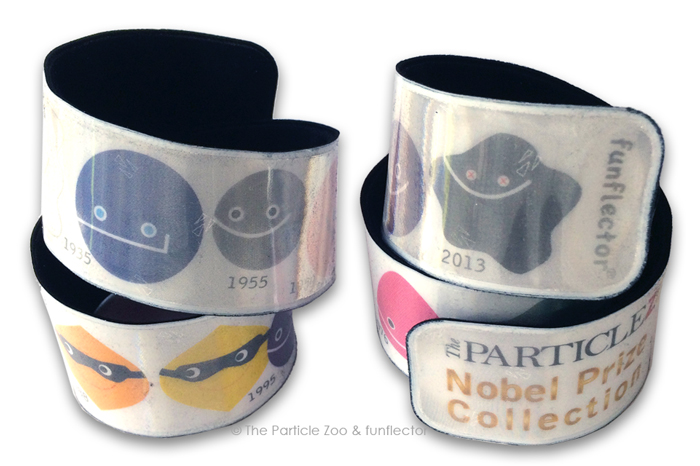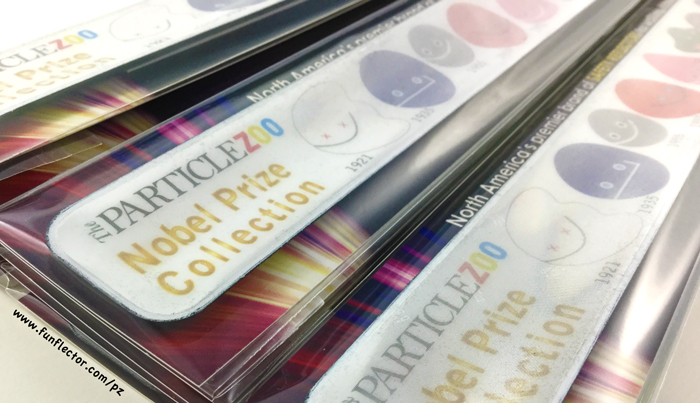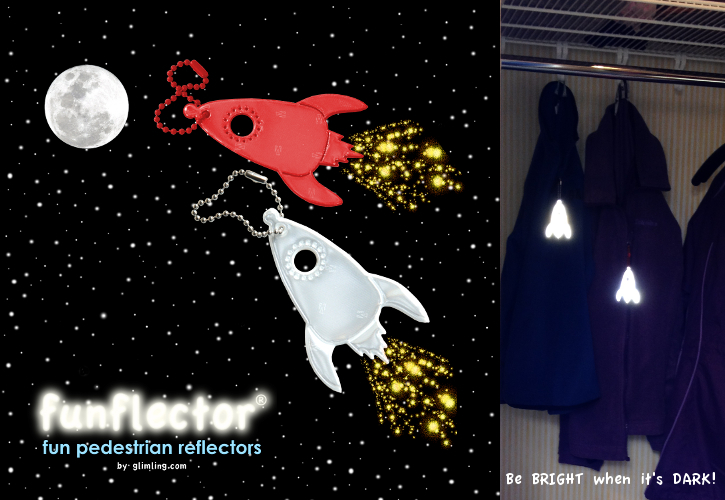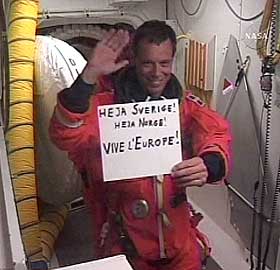Reflective Slap Bracelet with Nobel Prize Collection – Part 3
In anticipation for the announcements of the Nobel Prize 2017, we will finish up the stories behind the particles included in the Nobel Prize Collection reflective slap bracelet. If you missed the beginning, go here for part 1.

1988 – The Muon Neutrino
Colleagues Leon M. Lederman, Melvin Schwartz and Jack Steinberger shared the Nobel Prize “for the neutrino beam method and the demonstration of the doublet structure of the leptons through the discovery of the muon neutrino“. Neutrinos have no charge, very little mass and limited willingness to interact with and leave tracks in particle detectors. The research trio used a multistep process to produce a neutrino beam by creating showers of pi mesons from a proton beam and then let the mesons decay in layers of thick battleship steel. …
Reflective Slap Bracelet with Nobel Prize Collection – Part 3Read More »
Reflective Slap Bracelet with Nobel Prize Collection – Part 3 Read More »









